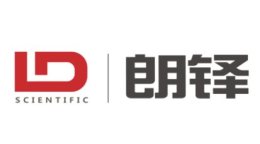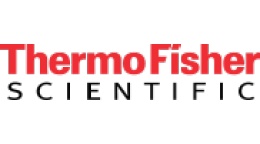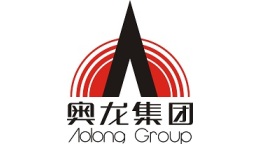方案详情文
智能文字提取功能测试中
by Pamela Hatchfield Testing for Pollutants,continued Pollutants in the Museum Environment: Practical Strategiesfor Problem Solving in Design, Exhibition and Storage The following is an excerpt from the book Pollutantsin the Museum Environment. The book reviews much ofthe literature on the subject and includes discussions of:sources of pollutants; methods of testing (the sectionreprinted here); potential damage; construction materialsused in the museum environment, from wood productsto plastics; stable materials; protection of objects inenclosures; and the mitagation of pollutants. It is writtenfor those who deal with the challenge of preventive con-servation - this includes conservators as well as architectsand designers,curators, collections care specialists, andcollections managers. Testing for Pollutants In order to develop appropriate mitigation strategies, it iscrucial first to identify the nature of pollutants present andtheir sources as well as the sensitivities to those pollutantsof the materials found in the collection. A variety of testingmethods have been used to identify pollutants in air andpollutants emanating from construction materials, as well asthose produced by objects themselves. Numerous pollutantsalready described are present in the outdoor environment,and may easily find their way into buildings. Many pollutantsare also generated within the building itself. Environmentaltesting is crucial to understanding whether a problem exists,and defining the nature of problems when they arise. The production of storage, packing, and exhibition environ-ments for works of art and artifacts in the museum commu-nity relies on a wide range of commercial materials used inindustry. Even when the composition of these materials isknown, they must be evaluated on an ongoing basis for theirsuitability in proximity to works of art, because commercialformulations often change without notice to consumers. Testing of materials can pinpoint sources of problematiccontaminants and prevent their introduction into the envi-ronment of works of art. Although testing methods overlap,testing goals can be divided into two broad groups: thosethat test the environment, and those that test materials. It isimportant to keep in mind that while volatile pollutants arecapable of damaging works of art and artifacts withouttouching them directly, non-volatile contaminants makemany materials unsuitable for direct contact. Some inherentlyacidic materials may not cause corrosion or other reactionsin testing for harmful volatiles, but may cause staining, cor-rosion, acidification, or other damage on prolonged contact. Some of the greatest problems encountered in this areaconcern lack of sophisticated equipment- which assists inpinpointing a problem, duration of sampling time, and diffi-culty in producing reliable results required for more gener-alized and less expensive methods such as the Oddy test Environmental testing methods may be divided into severalcategories. The most sensitive and precise testing methodsinvolve active sampling of the air, and require sophisticated analytical methods. These methods are typically quite ex-pensive, and the level of detail they achieve may not berequired in many cases. Active methods (also called dynamic methods), typicallyused in environmental testing, remove air from an area witha manual or mechanical pump; analysis is conducted in thepump by various methods of instrumentation such as gaschromatography, mass spectrometry,high-performance liq-uid chromatography (HPLC), and Fourier transform infraredspectroscopy (FTIR). Industrial testing methods for emis-sions from materials have typically used a closed chamberwith a controlled air flow. A method using solid phase mi-cro-extraction and gas chromatography/mass spectroscopyhas recently been adapted specifically for the detection offormic and acetic acid from construction materials used inconservation (Rhyl-Svendsen 2000). Other methods may collect samples using passive samplersbut still require laboratory analysis. These methods requireless scientific support, at least during the collection phase,and give precise results, but analyses still tend to be quiteexpensive, requiring the use of HPLC for example. Othertypes of passive monitors,such as Draeger tubes, are lesssensitive but can be read directly, pollutant levels often indi-cated by visible color change within a short period of time.These monitors are specific for individual pollutants, so forexample, a formaldehyde monitor will not indicate the pres-ence of formic acid. Passive methods rely on the affinity ofpollutants to sampling materials and usually require subse-quent analysis of trapped contaminants or reaction productssuch as corrosion, although some passive methods incorpo-rate testing within the device itself. Accelerated techniques use test materials such as metal cou-pons or papers, in enclosures with materials at higher thanambient temperature and humidity. Spot tests rely on colorchange or observation of immediate reactions on samples ofmaterials and often require that a sample of the material besacrificed for the test. This is significant when consideringdirect testing of artifact materials. ENVIRONMENTAL TESTING METHODS In addition to environmental testing methods specificallydesigned or adapted for use in larger air spaces, some of thetests presented below for the identification of problematicmaterials can also be used for testing smaller environmentssuch as display or storage cases,cabinets or rooms. Thesetests are generally fairly simple and inexpensive to conduct.While they may be able to identify areas in which a problemis present, they can only be used as very general indicators.Specialized methods requiring more sophisticated technolo-gies and training are available for qualitative and quantita-tive measurements. These methods, of course, require moresubstantial funding as well. A variety of environmental testing methods is available totest the levels of pollutants in the air in buildings, storageareas, or even in exhibition cases. A recently developed method based on analysis of potassium hydroxide-treateddiffusion tubes and subsequent analysis by ion-exclusionHPLC, identifies low levels of acetic acid and formic acid aswell as formaldehyde (Gibson et al. 1997a: 1). Commercialacetic acid monitors only detect 300 ppb (743.75 ug/m) orgreater, but more sensitive sampling methods have been de-veloped that can identify formic acid and acetic acid levelsas low as 10 ug/m(Gibson et al. 1997c). Passive sampling devices have been used as a more eco-nomical alternative to active sampling methods. Theyuse the same technology as active methods,e.g. with onemethod which uses 2,4-dinitrophenylhydrazine to trap car-bonyl compounds, or bisulfite-coated papers which are thenreturned to the manufacturer for identification, using HPLCor chromotropic acid methods (Grzywacz 1993: 613). Several atmospheric corrosion monitors have been devel-oped to identify levels of corrosive agents in building en-vironments.Purafil has developed a product based on themeasurement of tarnish layers on silver coupons called theMuseum Silver 6 PakB (see below). The Purafil OnGuardB2000 Atmospheric Corrosion Monitor is a device which pro-vides real time measurements of the accumulation of corro-sion on copper and silver coupons due to pollutant levels. THERMAL DESORPTION GAS CHROMATOGRAPHY-MASS SPECTROMETRY In this method, volatiles are concentrated onto sorbent trapssuch as highly purified carbon. They are subsequently re-leased in the gas chromatograph by the application of heatand separated into individual constituents, and are detectedand identified by mass spectrometry (Landry et al. 1991).This highly sensitive method provides identification of thespecific compounds emitted from the tested materials. Headspace gas chromatography (American Society forTesting and Materials,ASTM 4526-85 1991) has also beenused to detect volatile substances in polymers (Nicholsonand O'Loughlin 1996) DETECTOR TUBES Detector tubes are used for the detection of a variety of gasesand acids, including volatile acids and aldehydes. Air isforced into the tube by hand or using a pump, subsequentcolor change indicates ppm measurement of a specific pol-lutant. Each tube detects only the specific pollutant forwhich it is engineered, registering a color change in a sorbentinside the tube that reacts with the specific pollutant forwhich the tube is designed. They are of marginal use in theidentification of pollutants in museums because they are de-signed to detect levels of pollutants significantly higher (onthe order of 100 ppm) than those capable of causing damageto works of art. Although they can be used to detect lowerlevels of pollutants by increasing sampling time, in practicethis is found to be impractical. PASSIVE MONITORING SYSTEMS Passive monitors rely on the affinity of a given pollutant fora substrate or adsorbent and the subsequent ability to ex-tract, measure or otherwise evaluate the amount of pollutantor reaction product present. Those using sorbents allow gas-es or vapors to infiltrate the absorbing medium by moleculardiffusion. The direct reading devices collect pollutants onadsorbents and results are immediately indicated, usuallyby a color change, on the detector. These are typically lessprecise and less sensitive than other methods which requiresubsequent analysis. These monitors trap vapors for laterextraction and identification, and require that samples besent to a laboratory for analysis. Commercial direct reading passive monitors are capable ofdetecting pollutant levels 100 ppm or higher (Grzywacz1995:200),levels far higher than the threshold for potentialdamage to works of art. Some less precise but still infor-mative methods involve the exposure of metal coupons orpaper strips to atmospheres and subsequent evaluation ofcorrosion films or color changes. Some use visual assess-ment of surface alteration as an indication of pollutants,others use analytical methods such as ion chromatography.(Tennent et al. 1993). Passive monitoring devices have been subjected to exten-sive evaluation for their use in the field of preservation, andsome have been recommended for use with formaldehydeand acetaldehydes (Grzywacz 1995). Recently, passive sam-pling methods using PalmesTM diffusion tubes have beenadapted to monitor levels of acetic acid and formic acid inthe museum environment (Gibson et al. 1997a: 1).Thesetest methods are also available for sulfur dioxide, ozone, ni-trogen dioxide, hydrogen sulfide, and carbonyl sulfide. DIRECT READING DEVICES This classification includes samplers that allow theimmediate evaluation of the results of testing withoutrequiring subsequent analysis by the manufacturer. They areavailable as dosimeter badges, detector, or diffusion tubes. Dosimeter badges Dosimeter badges are intended to be worn by individualsworking in areas containing pollutants and are geared toindicate exposure levels generally above 100 ppb, becausethey focus on health effects.They may not be sensitiveenough for museum applications, although various waysof increasing their sensitivity have been explored. Somedosimeter badges are direct read, but most require furtheranalysis. In some instances, however, sufficiently sensitivemeasurements may be taken by modifying methods usedwith a dosimeter badge (GMD Systems Inc. 570 SeriesFormaldehyde DosimeterTM). This monitor for formalde-hyde was able to identify levels as low as 0.2 ppb (0.25ug/m) formaldehyde for a 24-hour exposure, even thoughits original range was from 5 ppb (6.20 pg/m’) to 1500 ppb(1859.68ug/m’) formaldehyde (Grzywacz and Stulik 1991).Dosimeter badges require some airflow in order to achieve accurate results, and cannot be used in stagnant air spaces(Gibson et al. 1997a:2). Dosimeter badges were evaluated for use in detecting lowlevels of pollutants in the museum environment. These sys-tems were originally designed for detecting higher levels inindustrial settings in response to government and organiza-tion regulations (OSHA, also ASHRAE), and each detectoronly identifies a single pollutant. After sample collection,analysis is required, and dosimeters are typically sent backto the company producing them for determination of pollut-ant levels. Diffusion tubes Today, low level diffusion tubes are available for sulfurdioxide, nitrogen dioxide, hydrogen sulfide,ozone, andcarbonyl sulfide. Diffusion tubes can be read directly forresults, although industrially produced diffusion tubes havehigh detection limits. They provide a color change uponreaction with specific pollutants, and their sensitivity maybe able to be extended by increasing the duration of expo-sure. Diffusion tubes have been used to identify high levelsof sulfur dioxide and volatile acids in enclosed areas(Piechota 1992b). Unlike detector tubes, they do not requirea mechanism for pumping air through them, and can be usedfor detecting lower levels of pollutants than detector tubes(on the order of 80-1200 ppb). They are inexpensive anduseful for high level screening, but are problematic becauseof the potential for inaccurate results in mixed gas atmo-spheres, the light sensitivity of reactants, their rather widemargin of error, and their inability to register low levels ofpollutants (Grzywacz 1995: 202). A recent adaptation of the PalmesTM diffusion tube,origi-nally designed to sample for nitrogen dioxide, has provenuseful in the detection of low levels of acetic acid and for-mic acid. This method uses a tube sampler containing paperimpregnated with 1M potassium hydroxide and 10%v/v(volume per volume) glycerine, which is exposed over a pe-riod of 1-2 weeks. Subsequent ion chromatography analysiscan detect as little as 44 ug/m3 acetic acid and 13 ug/m’formic acid (Gibson et al.1997b). Lower amounts of pollutants are detected by passive sam-pling methods rather than by active methods, a fact ac-knowledged by the EPA, which allows for as much as a20-30% difference between results from the two methods(Grzywacz 1993: 613). Nevertheless, passive monitors thatrequire laboratory analysis can detect much lower levels ofpollutants. Direct reading methods are generally not sensi-tive enough for museum purposes, and the results may beinaccurate because of the sensitivity of the reactants todegradation. Additional monitoring methods are under development. Inone method, results can be obtained in as little as two weeksby exposing lead strips and borax-impregnated silica gelstrips to wood products. Although no corrosion is visible tothe eye, ion chromatography may be performed on the aque- ous extracts of these strips, thereby quantifying the effectsof formic acid and acetic acid generated from wood prod-ucts (Tennent et al. 1997). PURAFILQ SILVER ENVIRONMENTAL CLASSIFICA-TION COUPONS One product, the Museum Silver 6 PakTM was developed forthe identification of corrosive agents in building environ-ments based on the measurement of tarnish layers on silvercoupons.The coupons,attached to a Plexiglas@ support,are installed in areas where problems are suspected andthen returned to the company, where the thickness of thecorrosion layer is measured and evaluated in comparison tocontrol coupons, using the Equipment Reliability Standardfor electronic components (Instrumentation, Systems andAutomation Society (ISA) S71.04-1985). Coupons are typi-cally exposed for 90 days, with controls kept at the companyheadquarters for reference. Differences reported in the de-gree of corrosion which may be identified range from 7 umin the control to 23 pm in an open hall, to as much as 178um thick after 56 days of exposure (Sease et al 1997:2). Interpreting the results of this test method can be problemat-ic, and test coupons placed inside cases should be carefullycompared to control coupons from outside the test area, be-cause the equipment reliability standard only identifies theamount of corrosion which would impede the proper func-tioning of electrical equipment, and does not relate to thelong-term or indefinite stability of an artifact. Test resultsmay be returned with a large unknown component, as onlylimited information is returned to the testing site about thetypes of corrosion products found. The unknown componentmay indicate the presence of volatile acids and aldehydesfrom construction and fabrication materials. TEST FOR ALKALINE ENVIRONMENT Simple methods are proposed for the identification of prob-lematic atmospheres in newly constructed buildings,includ-ing the use of linseed oil impregnated filter paper whichchanges color from pale yellow to dark brown on exposureto highly alkaline conditions in newly constructed concretebuildings (Kenjo 1986: 295). Color changes are quantifiedusing a colorimeter. Although the wisdom of introducingeven small amounts of drying oils into the environment hasbeen questioned, this method is extremely simple and mayidentify problems in new construction at a very early stage. Contaminants can also be monitored in the atmosphereinside buildings using pH-indicating solutions to determinewhether acidic or alkaline conditions exist. TEST FOR ACID OR ALKALINE ENVIRONMENTUSING pH INDICATORS (KENJO 1986: 296) Acid-alkali indicators, also called“color-changing test pa-pers”(Kenjo 1986: 296-7), involve the use of a paper basedpH indicator to indicate acid to alkaline conditions in exhi- Table 13 Test for acid/alkaline environment using pH indicators (after Kenjo 1986) Color of strip Red Orange Yellow Yellow- Blue Green Blue green -green Ambient conditions Acidic Neutral Alkaline bition, storage or enclosed environments. Kenjo states thattesting by this method indicates that a newly constructedconcrete building takes 18 months to achieve air qualitysimilar to an unpolluted building, and two years to approxi-mate test results of strips reserved in a clean-air environ-ment, and that the linseed oil in paintings became denaturedas a result of exposure to the alkaline environment found ina new concrete building (Kenjo 1986: 295). 0.5% glycerol solutions of chlorophenol red, bromothymolblue,bromocresol green, and phenol red are prepared, mixedtogether, and applied to filter paper. Strips of the paper arehung inside an enclosed space (gallery, display case, storagecabinet) and the color observed after 24 hours (see Table 13). COLLOIDALMANGANESE DIOXIDE METHOD FORMONITORING AIR POLLUTION (LANGWELL 1976) This extremely simple test is not specific for sulfur dioxide,but a variation on the method has been used to indicate thepresence of sulfur dioxide (Hackney 1984: 108). It relieson somewhat subjective assessment of color changes uponcomparison with a control sample to identify the presence ofpollutants over a period of time. This can provide a graphicvisual assessment of conditions for non-technical personnelwho want to see evidence of the effects of pollutants in themuseum environment. Colorimetric measurements could betaken to quantify results, but the method is relatively non-specific. Table 14 Colloidal manganese dioxide test Sample size not applicable Reagent preparation ·22g potassium permanganate and 5g potassium acetate dissolved in lOOcc distilled or deionized water Procedure · 3 dilutions of this solution, one full strength; one diluted by lOx, another by l00x steep separate pieces of Whatman No. 1 filter paper in each solution brown stain appears on drying · cut samples of each as a control and seal in Mylar envelope; retain in dark Result cut samples of each for placement in galleries or enclosed spaces Most dilute sample will fade in several months; compare results in various air spaces with control over time. ENVIRONMENT TESTING IN MINERALOGICALCOLLECTIONS In mineralogical collections, the importance of identifyingpotential for damage from the interactions of mercury vaporfrom specimens, reduced sulfur gases and sulfur dioxideproduced by pyrite and marcasite oxidation (pyrite decay)has been clearly delineated (Waller 1990: 25-6). Commercialtest strips detecting sulfur dioxide (Quantofix sulfite ion teststrip), hydrogen sulfide (Machery Nagel lead-acetate paper)and ambient acidity (Machery Nagel pH paper 0-6 pH) havebeen used. Mercury can also be detected by fabricating anindicating strip made from filter paper impregnated withpalladium chloride.To identify low levels of hydrogen sul-fide, an indicating strip can be made by soaking commerciallead acetate test paper in an aqueous solution of 1M sodiumcarbonate (Andrew et al. 1993:14). MONITORING FOR PARTICULATEMATTER Fine and total particle sampling devices employing auto-mated scanning electron microscopy have been used tocharacterize particles in interior spaces (Nazaroff et al. 1993:22-3). A new technique called helium microwave-inducedplasma spectroscopy (He-MIPS) can rapidly examine par-ticles measuring 0.5 um to 10 um in diameter. It is usedspecifically for identifying the source of dust contaminationin buildings. Results are available within approximately anhour of sample collection (Anon. 1997b). MATERIALS TESTING METHODS Building materials have been tested by industry in a varietyof ways since the 1960s when NASA initiated a program ofemissions testing for materials considered for use in outerspace (Hodgson and Pustinger 1966). Subsequent to this,composite wood products were tested for formaldehydeemissions as the US Department of Housing and UrbanDevelopment developed regulations which became stan-dardized by the American Society for Testing and Materials(ASTM). Additional testing programs for carpeting havebeen developed by the Carpet and Rug Institute (CRI) re-sulting in “Green Tag”labeling. A modified version of theCRI protocol has been studied for standardizing the deter-mination of emissions from materials and products usedindoors (Levin and Hodgson 1996: 380). These methodsprimarily relate to the establishment of limits for volatilesubstances found to be harmful to human health, rather thanto the sensitivity of works of art in enclosed environments. The tests commonly used to identify materials which havethe potential to react with the materials of art include bothaccelerated aging tests and tests that identify chemical com- pounds by means of a chemical reaction, often producing achange in color (see Table 28). Accelerated aging tests areoften conducted at elevated temperatures, and inherentlymake the assumption that alterations seen at higher tem-peratures will appear at ambient temperatures after longerperiods of time. The temperature at which these tests areusually conducted is 60°℃ (140°F), as chemical reactionscaused at higher temperatures are not prevalent at or belowthis temperature. The justification for accelerating test results by applyingheat relates to the increase in reaction rates observed whentemperature is raised.According to the Arrhenius reaction,a 10°℃ (50°F) increase in temperature increases many reac-tion rates by 2 to 6 times, depending on the activation en-ergy of the reaction. Reaction rates have also been increasedby adding water to tests involving silver and copper, andwater and carbon dioxide to tests on lead coupons (Black-shaw and Daniels 1979: 18).The addition of carbon dioxideas originally proposed by Oddy to enhance corrosion effectson lead was identified as unnecessary in later refinements ofthe test protocol (Green and Thickett 1995: 147). TESTING FOR VOLATILE POLLUTANTS The classic test for detection of potentially harmful volatilesin the museum environment remains the Oddy test (Oddy1973), spontaneously named for the British Museum’sKeeper of Conservation, who adapted it to museum use. Itsvalue lies precisely in its non-specificity, allowing it to iden-tify a wide range of materials which might damage works ofart in enclosed spaces. The test was suggested by W. Andrew Oddy at the BritishMuseum in 1973 as a method for detecting materials whichhad the potential for damaging works of art and artifacts. Itinvolved sealing cleaned pieces of lead and silver foil in aglass flask for four weeks with the test samples and visualevaluation of changes in the metals when compared to acontrol. Over the years, the test has been modified to includea source of humidity,and various attempts have been madeto standardize the results of the testing procedure. Its other primary advantages are its simplicity, low cost,and low equipment requirements.Damaging compounds,however, are not specifically identified by this method, andreproducible results have been difficult to achieve. Further-more, alloyed metals react differently to environmentalagents than the pure metals used in this test method -e.g.,the inclusion of tin in some leaded alloys was observed tohave a protective effect, whereas silver alloys have beenobserved to corrode more rapidly than purer metals (Black-shaw and Daniels 1979: 18). In general, this phenomenoncertainly relates to the position of the metals in question inthe electromotive series, but certain materials such as silver,which are high on the electromotive scale, remain more sen-sitive to some environmental compounds than others. Numerous modifications of the test method have attemptedto deal with the difficulties of visual assessment of the se-verity of corrosion and to standardize results. In spite of all of this, the Oddy test continues to be used in conjunctionwith more sophisticated and specific testing methods becauseit detects the effects of a wide range of potential hazards tothe materials of art and artifacts. Early variations includedmethods for testing adhesives and paints by applying themto glass rods which rested above a reservoir of water onglass wool in test tubes stoppered with polyethylene (Hodges1982:58). Also, the purity of the silver (and presumably theother metals used in the test as well) has been the subject ofsome inquiry. In an effort to standardize the method, the useof AnalaRB metal foils (minimum 99.5% purity) 0.1mm inthickness has been recommended, together with guidelinesfor sample and test preparation. Some discussion has taken Table 15 The Oddy test place regarding the greater applicability of results usingdebased alloys such as sterling silver, which might moreaccurately reflect the composition of museum artifacts (Leeand Thickett 1996: Thickett 1998). Fine silver contains at least 99.5% silver. Sterling silver92.5% and7.5% copper while 800 Alloy contains 80%silver, 20% copper. Typical levels of impurities for 18th-and 19th-century silver average 0.2% gold,0.3%lead and0.1% zinc. It is likely that these impurities play a significantrole in the sensitivity to corrosion of silver alloy objects andthat significant zones of copper appear in less pure mod-ern silver as well as in older artifacts (Lins and McMahon1993). The reactivity of silver alloys with sulfur seems topeak at about 7.5% copper, the amount present in Sterlingsilver. The question has been raised as to whether debasedsilver should be used for such tests in order to more accu-rately represent the composition of artifacts. Other methods related to the Oddy test in that they involveexposure of lead to volatile acids include a method whichmeasures the rate of atmospheric corrosion caused by woodproducts and other potentially corrosive materials in micro-climates.Lead coupons suspended from an automatic bal-ance are exposed to volatiles evolved from wood or woodproducts in enclosed environments at 50°C and 80% RHand the mass of anions and cations formed by corrosion arecompared (Bemdt 1990). The method proposed as a standard by Green and Thickett(1995) forms the basis for the Table 15 description of theOddy test, although many institutions using their own con-sistent standards of preparation and materials over a longperiod of time have created an important body of knowledgerelative to the materials tested. The Boston Museum ofFine Art uses a variation of the British Museum standardfor the test outlined in Table 15. Three test coupons are sus-pended from monofilament in each test tube, and Teflon tapeis used rather than heat-shrink tubing. ELECTROCHEMICAL TESTING Electrochemical testing is used in the manufacturing industryfor determining the compatibility of materials consideredfor use in conjunction with metals. It simulates the corrosionbehavior of a metal in association with a test material. Thismethod has the potential to replace the subjective, visualassessment of degree of corrosion associated with the Oddytest in the evaluation of material suitability. Industry hastypically used weight change instead to quantify corrosionin similar testing methods (Donovan 1986: 215). The ability of a metal to resist corrosion in a certain envi-ronment is referred to as its polarization resistance. The cur-rent flowing between the metal and an electrode is measuredand translated into the rate of corrosion of the metal by thetest material. This method quantifies the polarization resis-tance for specific metals as a measure of their corrosion ratein milli-inches (mils) per year. The equipment for this pro-cedure includes a Gamry Instruments Corrosion Measure-ment SystemTM consisting of two potentiostatic boards in a computer attached to a test cell containing the test material,an inert counter electrode and a reference electrode (Reedyet al.1998). Water extraction of pollutants was the most ef-fective preparation for samples tested, and in general, thedegree of corrosion corresponded to that seen in Oddy andother visual tests: highest for lead, then copper, then silverCorrosion rates are measured in mils per year, and in trialsof this technology with commonly used materials rangedfrom 0.05 mils (Plexiglas⑧) to 8.16 mils per year for oak.The determination of acceptable standards remains an un-solved issue,however, until corrosion rate scales can bedetermined for a range of materials. PHOTOGRAPHIC ACTIVITY TEST The Photographic Activity Test (PAT) is designed to identifychemical interactions which might occur between materialsused for photographic enclosures and the photographic ma-terials themselves. Samples are placed in direct contact withindicators and subjected to accelerated aging to determinewhether interactions may occur. The test is an ANSI/NAPMStandard Test (ANSI NAPM IT9.16-1993) and an Interna-tional Standards Organization Standard (ISO 14523-1999).The Image Permanence Institute (IPI), Rochester Institute ofTechnology,performs this test. A-D (ACID DETECTION) STRIPS A-D (acid detection) strips were developed by the ImagePermanence Institute (IPI) for use in the identification ofacetate film deterioration. Prior to the introduction of thesestrips, the only way to detect the deterioration of film wasby the characteristic vinegar smell of acetic acid producedin the deterioration of cellulose acetate. Commerciallyavailableindicators intended for the detection of the deterio-ration of acetate-based films were evaluated by the conser-vation field, including products incorporating pH sensitivedyes on silica gel and paper substrates. These includedDanchek@, which probably uses bromocresol green dispersedin silica gel, and Film Decay DetectorB, which uses paperas the substrate (Fischer and Reilly 1995). This technique was refined for greater sensitivity and devel-oped into the well-known A-D strips for the identificationof deterioration of acetate-based films. The developers ofthis technique won an Academy Award in 1998 for theircontribution to the preservation of the history of the motionpicture industry. The usefulness of A-D strips for detectingproblems with nitrate films seems promising, but the IPIadvises caution in relying on results for other materials.Although originally developed as an indicator for the dete-rioration of acetate films (IPI 1995), A-D strips have beenused increasingly because of their simplicity to indicate thepresence of a range of volatile gases evolved from displayand storage materials (as an indicator of volatile acidityonly; different tests are required for materials intended fordirect contact with artifacts). The test is considered semi-1-quantitative, giving only an approximation of the amount ofvolatile acid released. Although A-D strips provide a veryquick method of identification of acidic materials,whichshould not be enclosed with or in proximity to works of art, they do not identify alkaline substances or the presenceof other harmful agents such as sulfur. A-D strips can beplaced in a closed container or a new heavyweight polyeth-ylene bag with the material to be tested, kept in the dark andmonitored for color change; a control (identical containerincluding test strip but without test sample) should alwaysbe used for comparison. They should be handled only withclean gloves or tweezers, not with bare hands (Nicholson andO'Loughlin 1996: 83-5). A-D strips should not be used as indicators of the qualityof the environment in a room because the adsorption ofatmospheric carbon dioxide will over time produce a falsepositive result, and exposure to light will fade the strips. Table 16 A-D strip test for the detection of volatile acetic acid rous agents pH PAPER VOLATILE ACID TEST This test was developed by Walter Hopwood (1979) at theSmithsonian Center for Materials Research and Education(SCMRE) to identify materials that contained volatile acids.An alkaline substance is applied to pH indicator paper andenclosed in a glass test tube with the material to be evalu-ated at 50°C. If acids are present, the alkaline substance isneutralized and the pH paper indicates their presence. Reagent preparation ·Distilled water boiled to remove CO.. Procedure protected with soda-lime tube while cooling and stored; or keep 2 liters of distilled water in 4 liter bottle with CO, absorbing cartridge in stopper pH indicator paper range 1-11 sprayed with limewater (barely wet); paper indicates pH 10. 2 strips prepared (one for blank) . 1ml of the prepared water (pH 6-7) is added to the bottom oftest tube · Place small amount of glass wool in tube to prevent sample from sitting in water, then place sample on top of glass wool Secure indicator strip to glass vial with straight sides fitting loosely in test tube with one end inside glass vial, the other secured by TeflonB tape on the outside Insert inverted glass vial into test TeflonB tape with TeflonB tape tube, securing it by pressure fit with ·Seal with TeflonB stopper, secured · Incubate in 50°C oven over tray of water Result pH falls rapidly if volatile acid is present Problems ·Complicated setup Blank test pH falls to pH 8 in 1 to 5 GLYCERIN pH TEST FOR VOLATILE ACIDS This test is intended to identify volatile acids in enclosedenvironments using pH paper applied with a glycerin(glycerol)/water mixture which will approximate an RH of50% on the test strip. This hygroscopic mixture will adsorbvolatile acids,producing a color change in the pH paper.Narrow range pH papers are recommended for better accu-racy; the author recommends pHrange of 4-7. pH readingscan be calibrated to concentration curves for acetic acidand corresponding zones of deterioration potential: low =pH 7.0-5.0 (<1000 ppb/2479.16 ug/m’); moderate =pH5.0-3.5 (1000-10,000 ppb/2479.16-24791.60 ug/m); high:pH <3.5 (> 10,000 ppb/24791.60 ug/m) (Tetreault 1992).Some authors have identified damage at levels far belowthis, on the order of 100 ppb (249.7 ug/m’) acetic acid(Brokerhof and van Bommel 1996:769). Table 18 Glycerin pH test for volatile acids Sample size “Proportional”to size of container Reagent preparation · Mix solution of 20ml deionized or Procedure distilled water and 80g glycerin glass container and inert, well sealed top (no cardboard or adhesive) Apply glycerin solution to pH indica- tor paper, preferred range pH4-7;use two or three strips for each test · Suspend indicators in jar over test material; indicators should not touch container or sample ·Prepare control without sample · After 24 hours, observe color change in indicator paper Result Read pH value for indicator paper Problems ·Glycerin in poorly sealed containers,or old glycerin may not be neutral inpH ·Neutral pH is rarely indicated because of atmospheric acidification by the presence of carbon dioxide · Results are limited to 50% RH · pH values achieved must be converted by calibration to concentration; more than one volatile acid may be present ·Quantification is difficult at low and high levels of volatile acid, or if mix- tures of acids are present ·Readings may be distorted because indicators can be bleached by con- centrations of formic acid>5000 ppb (9501.73(ug/m). IODIDE-IODATE TEST FOR VOLATILE ACIDS The iodide-iodate test was adapted from Feigl (1954).Volatile acids react with iodide and iodate ions to producea blue iodine solution in the presence of starch (Zhang et al.1994). Table 19 Iodide-iodate test for volatile acids Blackshaw, S. M. and Daniels,V.D. 1979‘The testing of materials for use in storage and display in museums’. The Conservator 3,16-19. Brokerhof, A. W., and van Bommel, M. 1996‘Deterioration of calcareous materials by acetic acid vapour: a model study',Preprints, llth Triennial Meet- ing,ICOM Committee for Conservation. Collings,T.J. and Young,F. J.1976 ‘Improvements in some tests and tech- niques in photograph conservation’. Studies in Conservation 21,79-84. Daniels, V.D. and Ward, S. 1982‘A rapid test for the detection of Conserva- tion 27,58-60. Donovan, P. D. 1986 Protection of Metals from Corrosion in Storage and Transit. New York: Wiley. Evans,U. 1937 Metallic Corrosion, Passivity,and Protection. London: E. Arnold & Co.,387. Feigl, F. and Anger, V. 1966 Organic Spot Tests. London: Elsevier, 219-22. Fenn,J. 1995a “The cellulose nitrate time bomb: using sulphonephthalein indicators to evaluate storage strategies’, in J. Heuman (ed.) From Marble to Chocolate: The Conservation of Modern Sculpture. London: Archetype Publications,87-92. Fischer.M. and Reilly,J.M. 1995 ‘Use of passive monitors in film collections’, Topics in Photographic Preservation 6. Wash.DC: PMG,AIC, 11-31. Gibson,L.T,Cooksey,B. G.,Littlejohn,D. and Tennent,N.H. 1997a‘Deter- mination of experimental diffusion coefficients of passive samples’ Gibson, L.T, Cooksey, B. G., Littlejohn, D. and Tennent, NH114997b2A CHROMOTROPIC ACID TEST FOR FORMALDEHYDE The chromotropic acid test (West and Sen 1956; Zhang etal. 1994) relies on the diffusion of free formaldehyde intoa solution of chromotropic acid (1,8-dihydroxynaph-thalene-3,6-disulfonic acid), producing a purple solution inthe reaction dish. This test is adapted for qualitative usefrom a quantitative test. Table 20 Chromotropic acid test for formaldehyde Sample size 2g or larger Reagent preparation 1% solution of chromotropic acid (w/ Procedure v) in concentrated (97%) H,SO (w/w) · Store this solution below 4°C and use within 2 days · Place 2g of test material in reaction flask · Place 0.2ml (10 drops) chromotropic acid solution in reaction dish · Place reaction flask in 60°C · Examine after 30 minutes · Purple color of solution indicates positive test for formaldehyde ·Dangers of working with concentrated acids Result Problems · Limited shelf life and special storage conditions for reagents ·Chromotropic acid is toxic SODIUM AZIDE/IODIDE TEST FOR SULFUR The sodium azide test (Daniels and Ward 1982) identifiesthe presence of easily reducible sulfur in materials. Sulfur-containing groups cause catalytic decomposition of sodiumazide/iodine solution, resulting in the evolution of nitrogengas bubbles. The rate at which nitrogen gas is evolved indi-cates the severity of tarnishing which can be expected. The test does not detect more stable sulfur-containing groupssuch as sulfates,sulfites or sulfonic acids or their salts(Feigl and Anger 1966). The advantages are that this test canquickly identify materials containing reducible sulfur, but itis recommended in conjunction with the Oddy test becauseother corrosive compounds may be present which will notbe identified with this specific test. This test is done at 40xmagnification with transmitted light. Although this test is extremely useful in the identification ofsulfur-containing materials that should not be used in prox-imity to works of art, problems with false positives werenoted in attempts to reliably identify keratinaceous materi-als under archaeological field conditions (Wellman 1997).These problems were attributed to the highly specific natureof the test, which was designed to identify certain solid ordissolved inorganic sulfur compounds and organic sulfurfunctional groups, including the disulfide link in keratin. The reducible sulfur test (ASTM 2001) is specific forsulfur impurities in paper. This and the paper tarnish test(ASTM 1998) are felt to be impractical for conservationneeds. For the storage of photographs, the following test ispresented for identification of materials selected that cantarnish silver (Collins and Young 1976). Table 21 Sodium azide/iodide test for sulfur Reagent preparation 0.01M hydrochloric acid Procedure Polish with alumina a 20 x 50mm strip of plate silver, wash in distilled or deionized water with a little ammonia,rinse with acetone Saturate material to be tested with 0.01M hydrochloric acid and place in direct contact with half of silver strip Place silver and sample on #3 Whatman filter paper in petri dish lid, weighted with 3 microscope slides Place petri dish base in lid and inject 2ml distilled or deionized water Incubate at 75°C for 8 hours, inject ing 2ml distilled or deionized water after 4 hours If no tarnishing after initial test period, continue for 2 additional 8-hr. periods Result Tarnishing in vicinity of sample if material is unsafe BEILSTEIN TEST FOR CHLORINE The Beilstein test (Williams 1986) for chlorine is a burn test,which in the presence of chlorine, produces a characteristicgreen flame. It is used to identify PVC plastics found in tu-bing, coin, slide and photo sleeves, and many other products. Table 23 Beilstein test for chlorine Sample size Not significant Reagent preparation Heat copper wire until flame is clear, indicating impurities have burned off Result Green or blue-green flame indicates the presence of chlorine Problems False positive result may be obtained due to residues from handling 。Sample may volatilize too quickly to react with copper wire; see variations on test method (Lee and Thickett 1996: 25) TESTS FOR CELLULOSE NITRATE The following two tests for cellulose nitrate are conductedwhen attempting to identify the presence of cellulose nitrateas a constituent of artifacts, where taking a small sampleis possible, or may be used when attempting to character-ize materials considered for use in display or storage. Thesulphonephthalein test identifies nitrogen dioxide which isreleased from cellulose nitrate when it deteriorates. This testis particularly useful in the identification of unstable artifactswhich may show no visible signs of deterioration. Table 24 Diphenylamine test for cellulose nitrate (Williams 1988b) Table 25 Resorcinol test for cellulose nitrate (Reilly 1991: 157) Sample size Scraping or chip smaller than pin head; can be microscopic if test conducted under magnification Reagent preparation Concentrated sulfuric acid Procedure . Place sample on glass or porcelain slide or spot plate Digest sample in concentrated sulfuric acid Add small amount resorcinol Result Problems ·Observe color Purplish-blue color indicates presence of cellulose nitrate and dangerous to prepare; take ade- quate precautions and follow safety . Test reagent is extremely corrosive rules for handling strong acids . Extreme sensitivity of test may give false positives due to presence of traces of coatings or adhesives CRESOL TEST FOR NITROGEN DIOXIDE Cresol red(o-cresolsulphonephthalein) or Cresol purple in-dicators are used for the detection of nitrogen dioxide fromdecomposing cellulose nitrate (Fenn 1995a). Alcohol orwater solutions are used to impregnate non-buffered filterpaper which is cut into strips and placed in the vicinity ofartifacts. The paper registers distinct color changes on expo-sure to nitrogen dioxide. Other pollutants (including camphorand volatile acids) do not seem to interfere with the resultsof this test, and the test will identify potential problems withcellulose nitrate objects before signs of deterioration arevisible. The dyes appear light stable and can be used on pa-per-supporting objects adjacent to them to indicate problemsover a long period of time. In one study (Zhang et al. 1994: 50), the combined resultsof the iodide-iodate test with the chromotropic acid testidentified the same range of problematic materials as theOddy test. The use of these two tests in conjunction withone another will not identify all substances known to causereactions in the Oddy test, and should not be assumed to bea substitute for broader range assessment. Certain materials evolving ammonia, or some componentsof adhesives such as phenol will not produce positive resultsin either of these two tests, whereas they will be observedto induce changes in samples in the Oddy test (Evans 1937:Oddy 1975). Although the simplicity of the Oddy test hasmuch to recommend it, when severe constraints are placedupon the duration of the test period, the benefits of usingthese spot tests are undeniable. Nevertheless, the dangers of working with concentrated acids and the importance of us-ing fresh reagents should not be underestimated. The chro-motropic acid will identify materials which do not appear tocause corrosion in Oddy tests. Table 26 Sulphonephthalein test for nitrogen dioxide Sample size Variable Reagent preparation Aqueous solution (0.04% w/v) of Cresol red or purple OR Procedure .Alcohol solution (methanol or ethanol denatured with 10%methanol:0.005% w/v) of Cresol red or purple Dip non-buffered filter paper into solution, tapping off excess o1Paper turns yellow; let dry Place in enclosure with object or sample to be tested; may also be used in storage or display environments Observe color change within approx imately 24 hours; response time is shorter for alcohol solution Result Color change pH range Cresol red 0.2 1.8 8.8 Color change Cresol red pink yellow reddish orange purple pH range Cresol purple 1.2 2.8 9.0 Color change Cresol red red yellow purple Problems .No safety information is available about the indicators Toxicity of methanol if using alcohol solution TEST FOR ACETATES Table 27 Test for the presence of acetates (Coxon 1993: 406) Sample size Shaving or chip Reagent preparation Solution of 6% potassium hydroxidein methanol (a)Saturated solution of hydroxylaminehydrochloride in methanol (b)Solution of 1 % ferric chloride inwater (c)Solution of 10% HCI(d) Procedure Place sample in test tube. Add 1ml of solution (a), then 1-2 drops of solution (b). Shake gently and leave to stand for at least 3 minutes AAdd 1 drop solution (c); shake Result Add up to 25 drops of solution (d) drop by drop,shaking gently after each addition, until color change is observed PBurgundy red color indicates thepresence of cellulose acetate or poly-vinyl acetate Pale purple-red is dilute positive, cyanoacrylate, or cellulose nitrate;repeat with smaller quantities of reagents to get strong positive PPale yellow is negative result Requires preparation and handling ofcorrosive reagents Problems Table 28 Accelerated aging and spot tests use Chemical species Test Method Duration Advantages/disadvantages Volatile acids. Oddy accelerated aging, 28 days identifies wide range of pollutants/ sulfur,others corrosion not specific/ long duration Volatile acids iodide-iodate colorimetric <1 day small sample size may give false negative; reagents have limited shelf life Acetic acid A-D strips colorimetric <1 day to l week light sensitive; sensitive to carbon dioxide Acetates potassium hydroxide/ hydroxylamine colorimetric <1 day corrosive reagents/complicated hydrochloride/ ferric chloride/HC1 Volatile acids pH paper test colorimetric <1 day complicated setup Volatile acids glycerine pH colorimetric 24 hours test limited to 50%RH: CO2 interference Formaldehyde Chromotropic acid colorimetric <1 day extremely sensitive/reagents have limited shelf life sensitive; false positives/ may volatilize too fast subjective interpretation of low Chlorine Beilstein flame/colorimetric <1 day Sulfur sodium azide microscope; evolution <1 day of bubbles level results; toxicity of reagents Sulfur/ silver Collings and Young accelerated aging/ 8-24 hours migration of reagents possible; tarnishing test tarnishing non-specific materials Cellulose nitrate resorcinol colorimetric <1 day very corrosive; extreme sensitivity may cause false positives toxicity? Nitrogen dioxide sulphonephthalein colorimetric 24 hours Testing for Pollutants, continued REFERENCES, continued diffusion tube sampler for the determination ofacetic acid and formic acid vapours in museumcabinets’,Analytica. Gibson, L.T, Cooksey, B. G., Littlejohn, D. andTennent,N. H. 1997c‘An improved passive sam-pler sorbent for the collection of organic acid va-pours from air’. [Unpublished draft] Green,L.R. and Thickett,D. 1995"Testing materi-als for use in the storage and display of antiquities-a revised methodology', Studies in Conservation40, 145-52. ( Grzywacz, C. M . 1993 ‘Using passive sampling devices to detect pollutants in museum Environ- m ents’,IOth Triennial M e eting Preprints,In t erna- tional Council of Museums Committee for Conservation.Washington,DC,610-15. ) ( Grzywacz,C.M. 19 9 5‘Ai r quality monitoring',inC. L.Rose,C.A. H a wks and H. H. Genoways (eds)Storage of Natural History Collections: A Preven- tive Conservation Approach. Iowa City: Society for t he P res. of Natural H istory Coll., 1 97-209. H ackney,S.J.1984The distribution of ga s eous air pollution within museums’. S tudies in Conserva- t ion 29, 105-16. ) Hackney, S. J. 1990‘Framing for conservation atthe Tate Gallery’, The Conservator 14, 44-52.Hodges, H. 1982 ‘Showcases made of chemicallyunstable materials', Museum 34(1),56-8. Kenjo, T. 1986 ‘Certain deterioration factors for ( works of art and simple devices t o monitor them’, Intn’1. J. o f Mu s . Management. 5,295-300. Landry, J. M., Schilling, M. R. and St u lik, D. C. 1 991‘ A nalysis of v olatile organic compounds fromdisplay and storage case materials’,in P. Hatchfield (ed.)Objects Specialty Group Postprints 189 7997.Abstracts Presented at the Annual Meeting,Albu-querque,New Mexico 3-8 June. AIC, 29-30. Lee,L.R. and Thickett,D. 1996 Selection of Mate- ) rials for the Storage or Display of Museum Objects.British Museum Occasional Paper 111. London:British Museum,15. Levin,H. and Hodgson,A. T.1996‘Screening andselecting building materials and products basedon their emissions of volatile organic compounds(VOCs)’,in B. A. Tichenor (ed.) CharacterizingSources of Indoor Air Pollution and Related SinkEffects. STP 1287. West Conshohocken,PA: Am.Society for Testing and Materials,376-91. ( L i ns,A. and McMahon,N.1993‘The Inhibition of Silver Tarnishing’,P r oc. of the 13th Intn’l. Sym. onthe Conservation and R e storation of Cultural Prop- erty, 4-6 October 1989. Tokyo: Tokyo NationalRes. I nstitute of Cultural Properties,135-62. ) ( Nazaroff, W.W.et a1. 1 9 93 A i rborne P a rticles i nMuseums.Research in Conservation 6. Marinadel R ey,CA: Getty Conservation Institute. ) ( N icholson,C. and O'Loughlin,E.1996“The use of A -D Strips for screening conservation and e x hibit materials’,in R.Espinosa (comp.) Book and PaperGroup Annual 1 9 96. Washington, D C: Book a n d P aper Specialty Group, AIC. ) ( O ddy, W.A. 1973“An unsuspected danger in d i s - play'.Museums ) Piechota,D. 1992b‘Diffusion tubes clarification’,AIC News 17(3), 16 and 17(5),25. ( R eedy,C. , Corbett,R.A. and Burke,M. 1998‘Elec- trochemical tests a s alternatives to current methods f or assessing effects of exhibtion materials on metalartifacts’. Studies i n Con. 43,183-9-6. ) Reedy, C., Corbett, R. A.,Long,D. L.,Tatnall,R.E. and Bradley, D. K. 1999 ‘Evaluation of threeprotective coatings for indoor silver artifacts’.Submitted to: AICRhyl-Svendsen, M. 2000 Indoor Air Pollution inMuseums - detection of formic and acetic acidemission from construction materials by SPME-GC/MS.Masters thesis. School of Conservation. Royal Danish Academy of Fine Arts, Copenha- gen. Sease, C., Selwyn,L. S.,Zubiate, S., Bowers, D. F. and Atkins, D. R. 1997‘Problems with coated silver: whisker formation and possible filiform cor- rosion'. Studies in Conservation 42, 1-10. Tennent, N. H., Cooksey, B. G., Gibson, L. and Littlejohn,D.1997‘Simple monitors for carbonyl pollutants.”in: N. Tennent (ed.) Con. Science in the UK,2nd edn.London: James & James,119-21. Tennent, N. H., Cooksey, B. G., Littlejohn, D., Ottway, B. J., Tarling,S. E. and Vickers, M. 1993 ‘Unusual corrosion and efflorescence products on bronze and iron antiquities stored in wooden cabi- nets’, in N. Tennent (ed.) Conservation Science in the U.K. Glasgow: James & James,61-6. Tetreault, J. 1992 ‘La mesure de l'acidite des produits volatils’,Journal of HC-CG 17, 17-25. Thickett,D.1998‘Silver foil for Oddy tests’,Con- servation OnLine DistList,8 October.194 ( Waller,R. 1990‘Pyrite oxidation at 25°C and 1 0 to 90% relative humidity',Preprints and a b stracts of the Fifth Annual M eeting of the So. for the Pres. ofNat. History Coll., Chicago , May 1990,25-6. ) ( Wellman, H. 1997 ‘ A short n o te on a test t hat failed',Conservation News 62,30. ) ( West, P.W. and Sen, B. 1956‘Spectrophotometric determination o f traces of formaldehyde’,Journal of Analytical Chemistry 153,12-18, Williams,R.S.,1986“TheBeilstein test’,Canadian Conservation I n stitute N otes 17 ( 1), 1-2. Zhang,J. Thickett, D. and Greene, L.1994‘Two ) WAAC Newsletter Volume Number May WAAC Newsletter Volume Number May Grzywacz and Stulik GAMRY Reference 600+技术优势:(1) 电流分辨率高,20 aA,有实验数据证实。低电流到pA。(2) 仪器的背景电流小,<2 μV rms。(3) 仪器的高阻抗测试/低阻抗测试性能好,100TOHM, 0.1 mOHM 等。(4) 软件友好,容易学习,和功能全;可以扩展任何需要的电化学测量。(5) 再加一台仪器,可以和SECM, IMPS/IMVS 等兼容。(6) 和RAMNAN, UV, TEM, EQCM, RDE 等联用。(7) 浮地设计最好,可以和高压釜合用。(8) 有温度测试模块。(9) 软件自动编程,进行电化学测量。(10) EIS阻抗频率范围:10μHz到5 MHzReference 600+是典型的科学研究级电化学分析仪器,它使用USB接口,可以直接与便携式计算机和台式计算机连接,支持功能强大的Gamry应用软件包,例如DC105直流腐蚀软件包,PHE200物理电化学软件包,EIS300电化学阻抗谱软件包等,几乎涵盖所有电化学分析方法。Reference 600+电化学综合测试仪的输出电流范围从±600 mA至±60 pA,拥有11档电流范围和档位快速补偿能力。Reference 600+的输出电压为±22V,恒电位扫描电压为±11V。进行CV实验时,最快的扫描速率能达到1200V/s。这些特点保证了Reference 600+能够适应高腐蚀速率及具有良好导电能力溶液的电化学体系。Reference 600+的直接信号综合电路允许EIS频率扫描范围从10μHz到5 MHz,在1MHz情况下进行EIS测量时的误差小于2%,是真正意义上的高频电化学交流阻抗测试系统。强大的电压和电流信号过滤系统能保证在嘈杂的环境中得到稳定安静的测试环境。优异的稳定性保证即使电脑运行其他程序时也可正常工作。Reference 600+提供了独一无二的结合能力,具有电流中断和阳极反馈IR补偿能力。 Reference 600+ 的电化学软件Gamry为Reference600设计了一套完备的电化学应用软件程序。电化学试验在Gamry FrameworkTM上进行,其数据在电化学分析软件Echem AnalysTM中进行处理。PWR800电化学能源软件包PWR800软件包为测试和表征能源存储和转化期间以及材料领域提供了标准测试技术。我们将大功率循环伏安,充电,放电,循环充放电,以及其他常用大电流测试组合起来。当然,您同样也可以采用Gamry序列测试将所需要的特殊测试按顺序组合起来。EIS电化学阻抗谱EIS对各种各样的应用来说是一个功能强大的工具,对PWR800软件极好的补充。Gamry开发的EIS软件—易于使用、程序简洁。它提供了许多不同EIS测试技术,包括恒电位、恒电流、混合控制模式。可使用单一正弦波测量,也可利用多重正弦波进行快速EIS的测量。同样来自于Gamry’s扩展软件包PHE200 物理电化学—一般电化学研究软件包。PV220 脉冲伏安—标准和可定制的脉冲实验。DC105 直流腐蚀—腐蚀测试过程中遇到的素有标准技术。ESA410 电化学信号分析—电化学噪声信号的获取和分析。EN120 电化学噪声—简单的噪声软件。EFM140 EFM—模拟Tafel常数和腐蚀速率。CPT110 临界点蚀温度—ASTM标准化测试。 VFP600 可视前面板—基础电化学控制,成本低廉。
关闭-
1/13
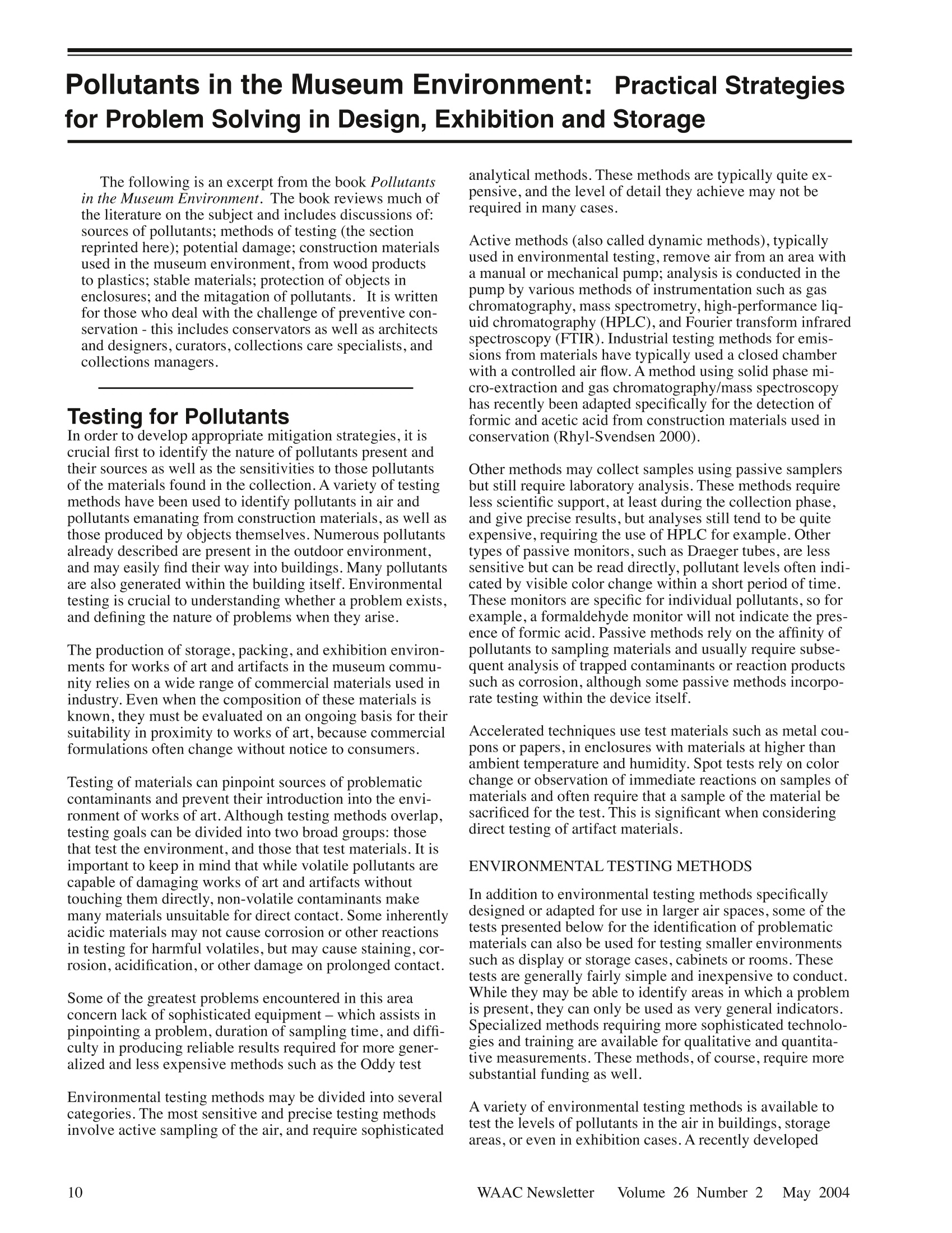
-
2/13
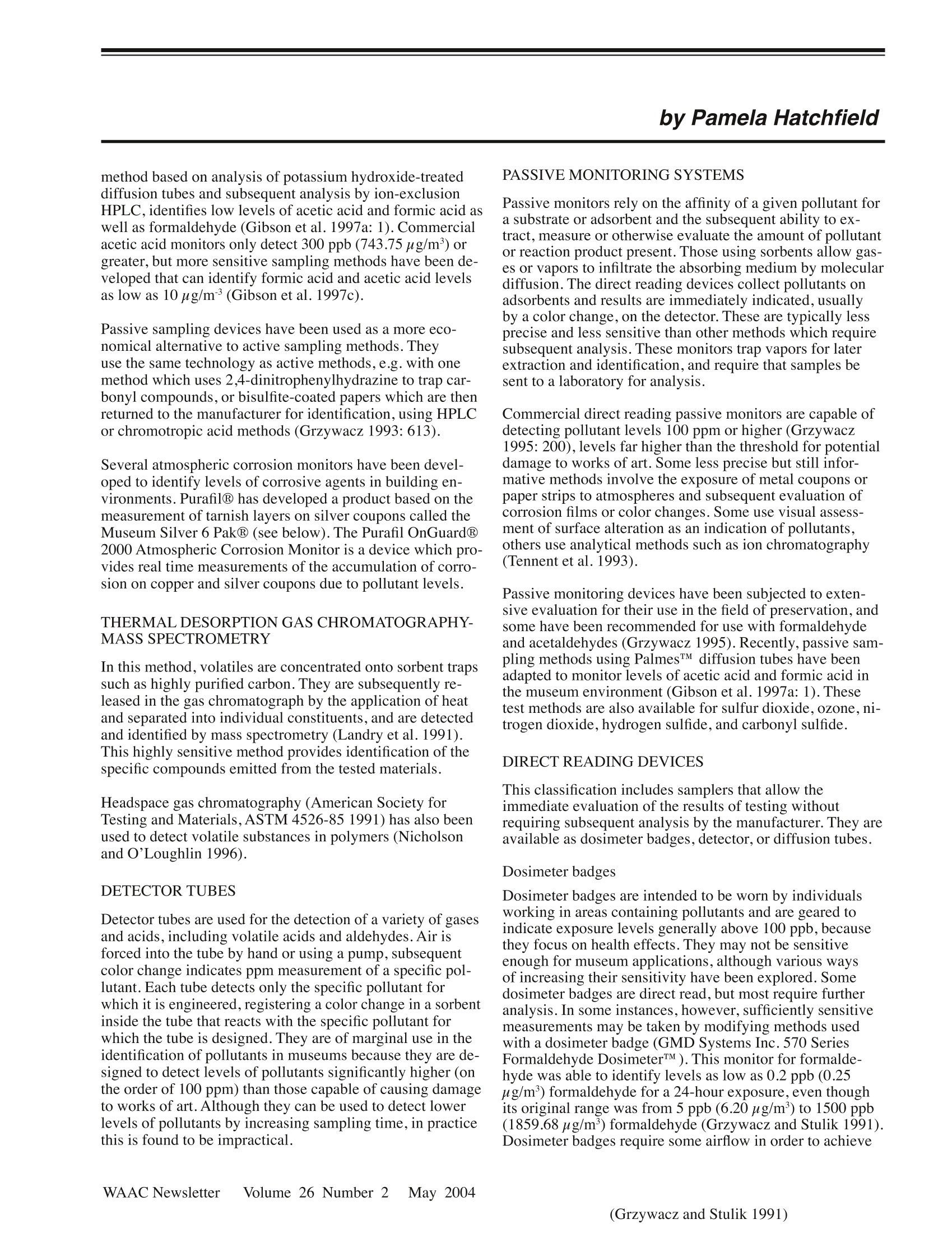
还剩11页未读,是否继续阅读?
继续免费阅读全文产品配置单
北京亿诚恒达科技有限公司为您提供《青铜器文物中年份鉴定、保护检测方案(电化学工作站)》,该方案主要用于文物中年份鉴定、保护检测,参考标准《暂无》,《青铜器文物中年份鉴定、保护检测方案(电化学工作站)》用到的仪器有电化学工作站Reference 600+。
我要纠错
推荐专场
相关方案


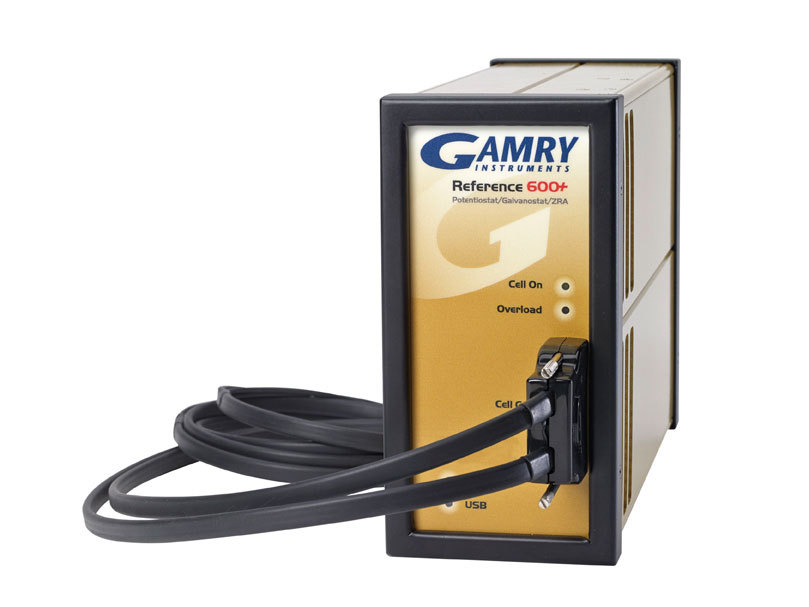
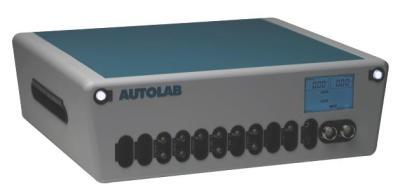
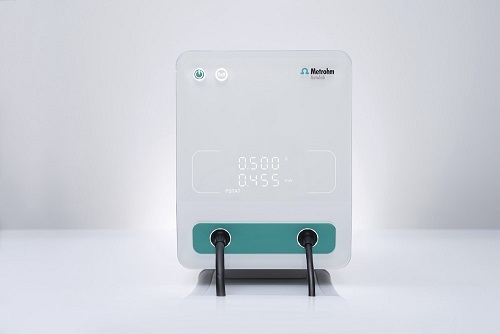

 咨询
咨询
